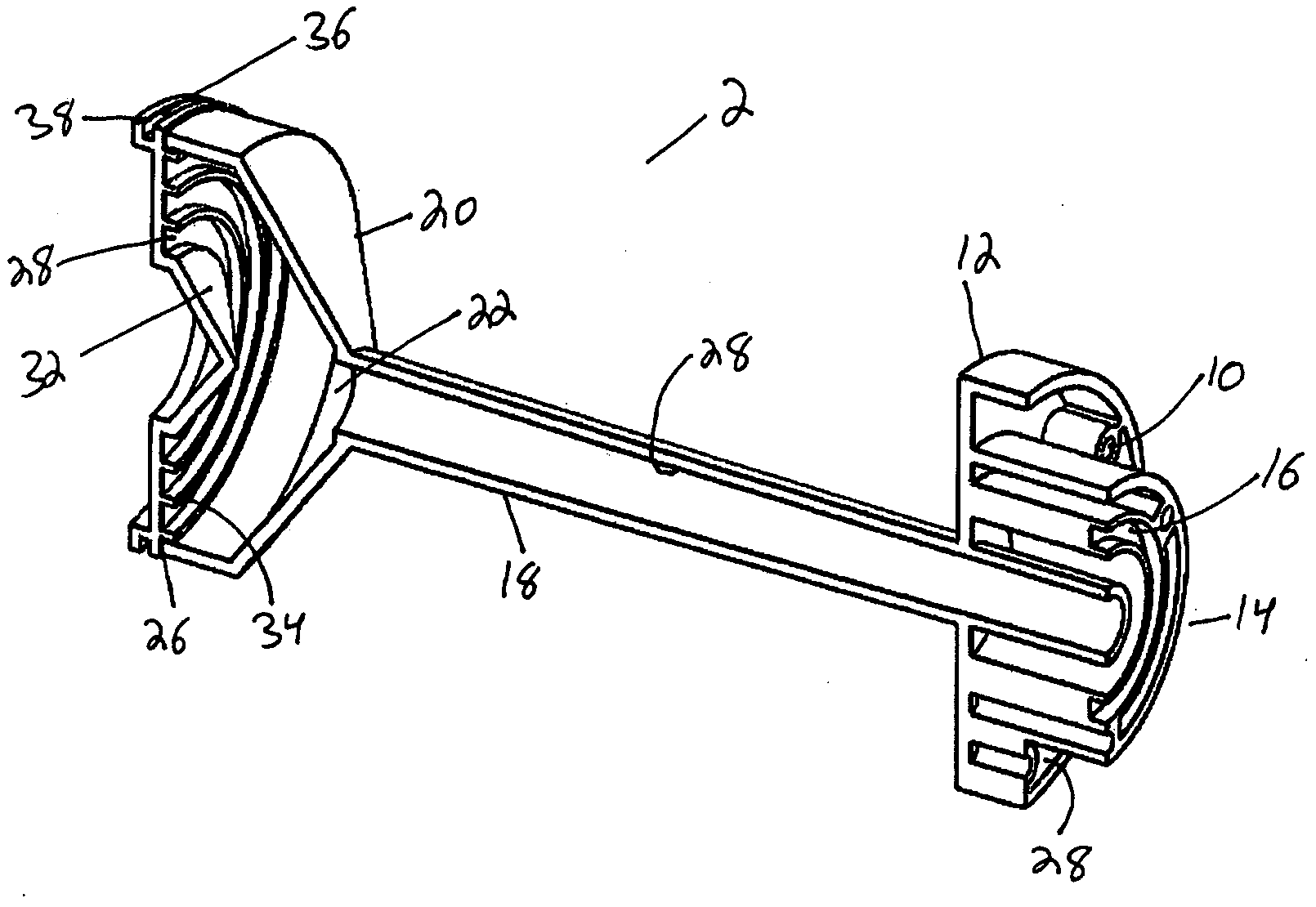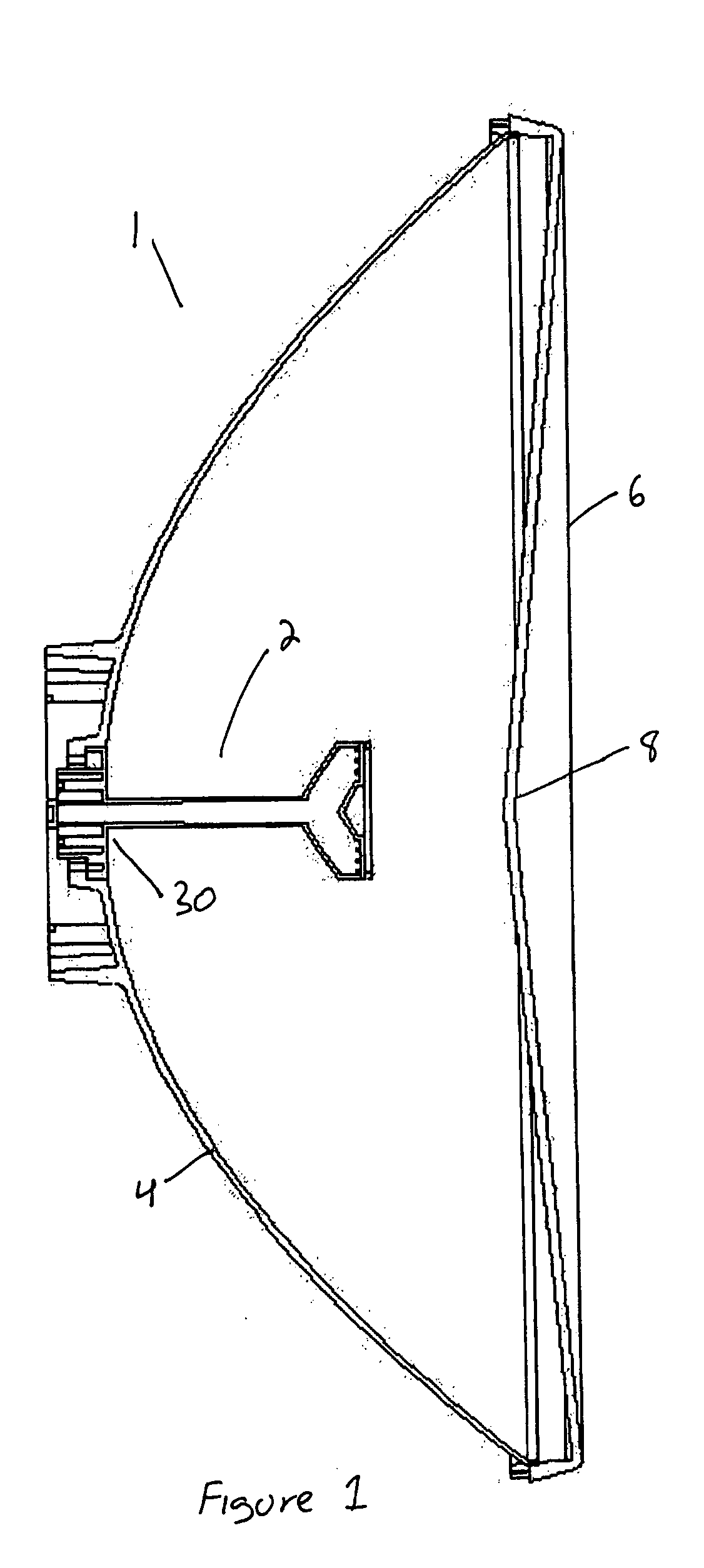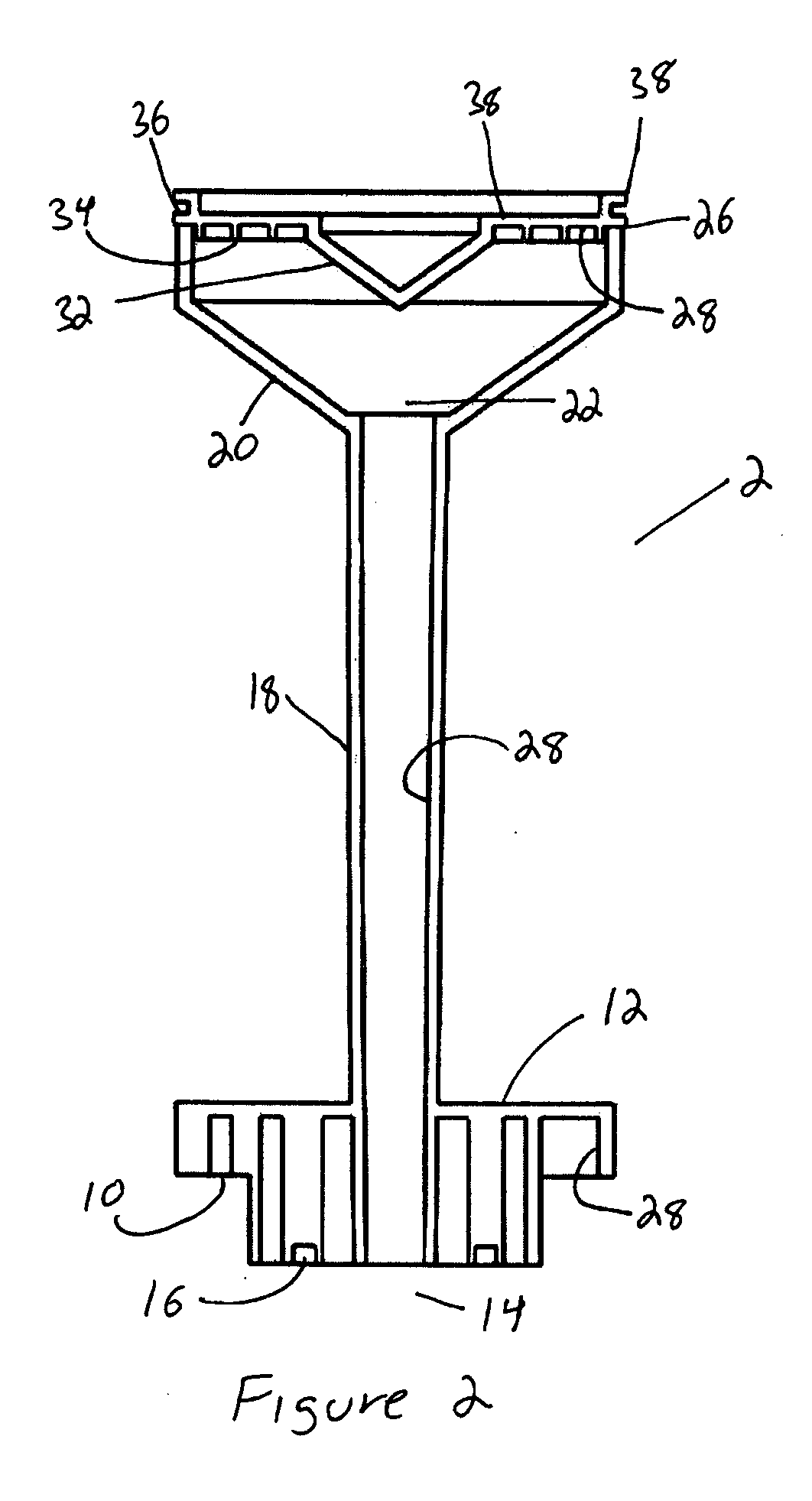Reflector antenna with injection molded feed assembly
a technology of reflector antenna and feed assembly, which is applied in the direction of antennas, antenna details, antenna couplings, etc., can solve the problems of only absorbing edge, inter-signal interference, wind load, structural support and manufacturing costs of antennas, and increasing overall weight of shrouds
- Summary
- Abstract
- Description
- Claims
- Application Information
AI Technical Summary
Benefits of technology
Problems solved by technology
Method used
Image
Examples
Embodiment Construction
[0020] A first embodiment of a reflector antenna 1 according to the invention is shown in FIG. 1. The feed assembly 2 is mounted at the center of a reflector 4. The reflector 4 is a so-called “deep” reflector with a generally parabolic shape that has been phase corrected. The reflector 4 may be formed from, for example, metal or plastic with an RF reflective coating. A cover 6 formed from dielectric material may also be added to inhibit environmental fouling and or improve wind loading characteristics of the antenna. The cover 6 may be strengthened by a center indentation 8. Also, the inclined dielectric surfaces with respect to the signal direction created by the center indentation 8 of the cover allows energy to pass through with minimum degradation in the return loss performance of the antenna. As shown, the reflector antenna 1 of FIG. 1 is 600 mm in diameter. One skilled in the art will appreciate that the reflector antenna 1 may be configured for smaller or larger diameters as ...
PUM
 Login to View More
Login to View More Abstract
Description
Claims
Application Information
 Login to View More
Login to View More - R&D
- Intellectual Property
- Life Sciences
- Materials
- Tech Scout
- Unparalleled Data Quality
- Higher Quality Content
- 60% Fewer Hallucinations
Browse by: Latest US Patents, China's latest patents, Technical Efficacy Thesaurus, Application Domain, Technology Topic, Popular Technical Reports.
© 2025 PatSnap. All rights reserved.Legal|Privacy policy|Modern Slavery Act Transparency Statement|Sitemap|About US| Contact US: help@patsnap.com



